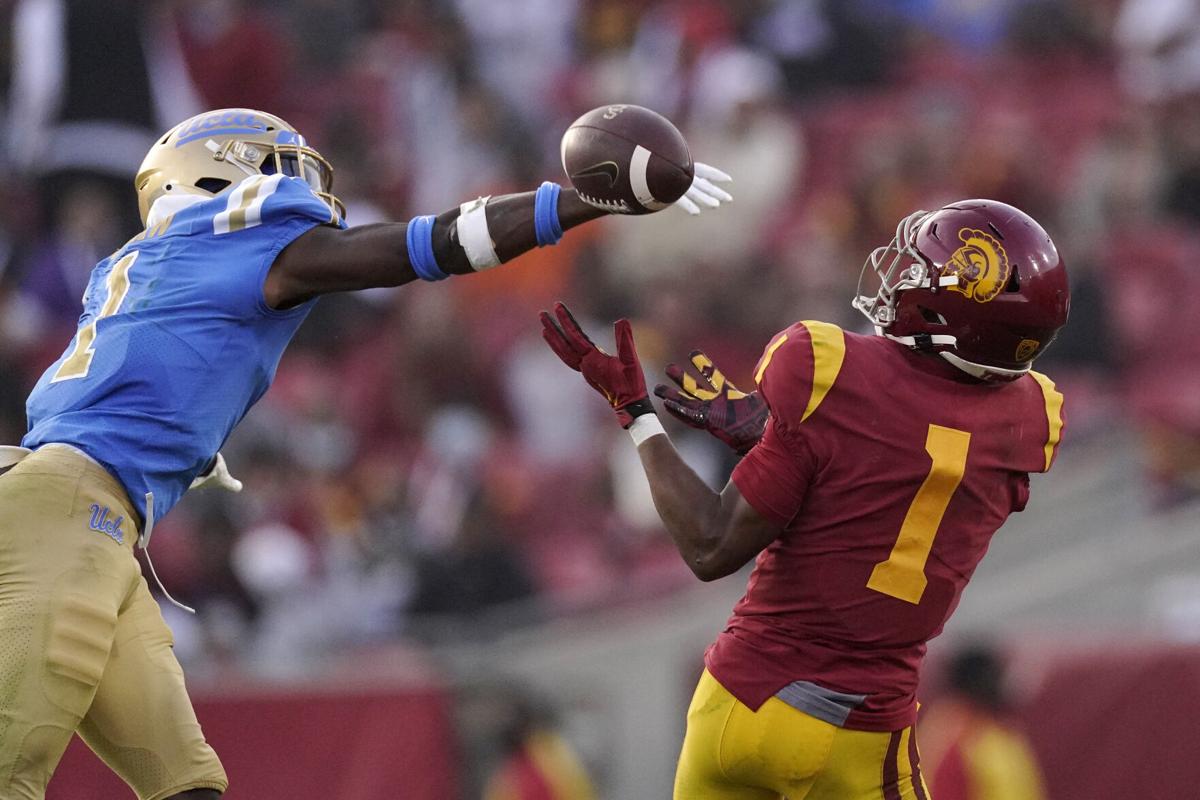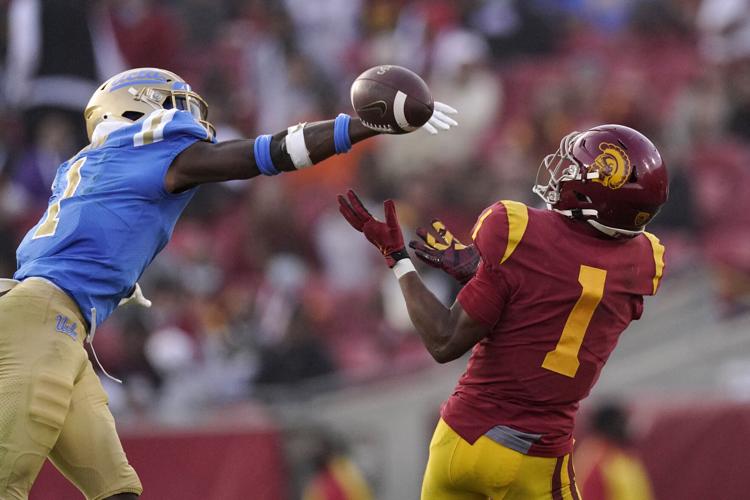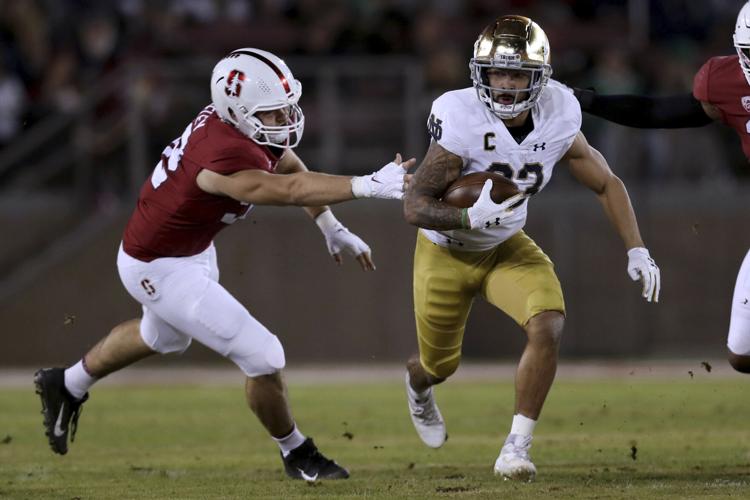Almost no one but college athletic directors pay attention to the Learfield Directors Cup standings, a measurement of a school’s overall athletic success in around 20 sports per year.
That’s because it’s so boringly predictable. In the just-completed school year, Texas, the athletic department with the biggest budget in college sports, was No. 1. Michigan and Ohio State are No. 3 and No. 4, respectively.
Follow the money, the TV money.
The only outlier in the top 10 — the only non-football power or non-Top 25 men’s basketball school — was No. 2 Stanford. Year upon year, the Cardinal trots out dominant swimming, tennis, golf, soccer, baseball, rowing and water polo teams.
In addition, Stanford’s academic reputation is that of an Ivy League school.
Yet when the Big Ten chose to invite and accept No. 12 USC and No. 15 UCLA to its money-based alliance last week, there was not a whisper about Stanford. Why? Because virtually nobody turns to CBS or ESPN or FOX to watch Stanford play football, or any sport.
People are also reading…
Exposure, not excellence, is the most coveted variable in 21st century college athletics. Exposure equals money, which permits Big Ten and SEC schools to pay football coaches as much as $9.5 million per year and build mammoth sports facilities superior to those of NFL teams.
Once you get past geography and logistics, Stanford would seem to have more appeal to the Big Ten than any school on the NCAA map, except maybe Notre Dame. But the greater San Francisco area cares so little about Stanford that the last two times it played host to Notre Dame’s football team, 2019 and 2021, it drew only 31,571 and 37,391 against the Irish.
Stanford reduced capacity at its football stadium from 80,000 to 50,000 a few years ago, and even that seems too cavernous.
In a financial sense, Stanford is toxic to those who measure TV audience sizes.
Once USC and UCLA skipped out of a century-long alliance with the core of the current Pac-12 membership, immolating the tradition and loyalty built over 100 years, no one seemed to mention Stanford, which, according to the Learfield Directors Cup, has been the most successful Division I school the last 25 years.
Stanford? Who needs ’em?

Stanford can't come close to a football sellout even when national brand Notre Dame visits every other year.
All of this college football realignment is based on 13 football games, per team, per season. Maybe 14. That seems so trivial. Thirteen football games make the other 352 days of the year meaningless.
And college football isn’t even No. 1 in its sport. According to Sports Media Watch, 13 of the 14 highest-rated football games of 2021 were NFL games. Those of us in the Pac-12 footprint — sorry, but I had to squeeze in one of former Pac-12 commissioner Larry Scott’s maddening go-to terms — don’t hold college football in the same life-is-essential bear hug.
We have other interests.
Average attendance at SEC football games last year was 71,195. The Big Ten averaged 65,252. The Pac-12? A mere 43,865. Perhaps that’s why the league and so many of the rest of us were caught by surprise when USC and UCLA made the most shocking move in sports since the Brooklyn Dodgers and New York Giants bolted for the West Coast in 1958.
I couldn’t have imagined that the Big Ten would change its world to add USC and UCLA because, frankly, the Bruins and Trojans have been mostly underwhelming for the last 40 years. Who would want them so badly to give them an equal cut of their media rights distribution each year?
All for the six million cable TV homes in SoCal.
USC built its brand from 1962-78, when it won five national football championships with names like John McKay, O.J. Simpson and Lynn Swann. Since then the Trojans had a single remarkable spurt from 2002-08 under Pete Carroll, but otherwise have been mostly uninspiring.
UCLA’s national profile was built from 1964-75 when John Wooden seemed to win the Final Four every season. But that’s men’s basketball, which only accounts for about 15% of media rights income. The Bruins have never been a consistent football power and haven’t been to a Rose Bowl since 1998. They are fortunate when a home football game fills 50% of the seats.
UCLA is a basketball school, but it’s not what you think. Since Wooden retired, UCLA has only been a No. 1 seed in 1979, 1992, 1995 and 2008. That’s not even on par with Arizona, which was a No. 1 seed six times from 1988 to 2022.
The Big Ten isn’t getting damaged goods, it’s just that it’s not getting the USC and UCLA of the 1970s. A half-century has passed. It’ll be like going to a Paul McCartney concert and wondering why he can’t hit all the notes anymore.
The Bruins and Trojans haven’t been hitting all the notes for decades.
But enough about USC, the Big Ten and their soulless partnership. That will soon become yesterday’s story. What matters now is where Arizona lands.
Now it is on Arizona president Robert C. Robbins to take charge rather than allow ASU’s ego-driven president Michael Crow — the No. 1 booster of the ill-fated Larry Scott years — or the oft-unenlightened Arizona Board of Regents, to determine the UA’s future.
Whether Robbins chooses to go solo and get Arizona into the Big 12, or help to create a partnership of the Pac-12’s 10 survivors, this is the chance of a lifetime to pursue a vision that would make the best of a bad situation.
It’s only the future of Arizona athletics that is at stake.
Robbins is the most sports-centric president in what remains of the Pac-12. If anyone can find a suitable home for the Wildcats, it is Robbins, who isn’t one to settle for a reshuffled Pac-12 with Boise State and San Diego State.
Arizona finished a modest No. 35 in the Directors Cup standings this year. That doesn’t mean it has to sit in a back seat and be told what comes next.



















